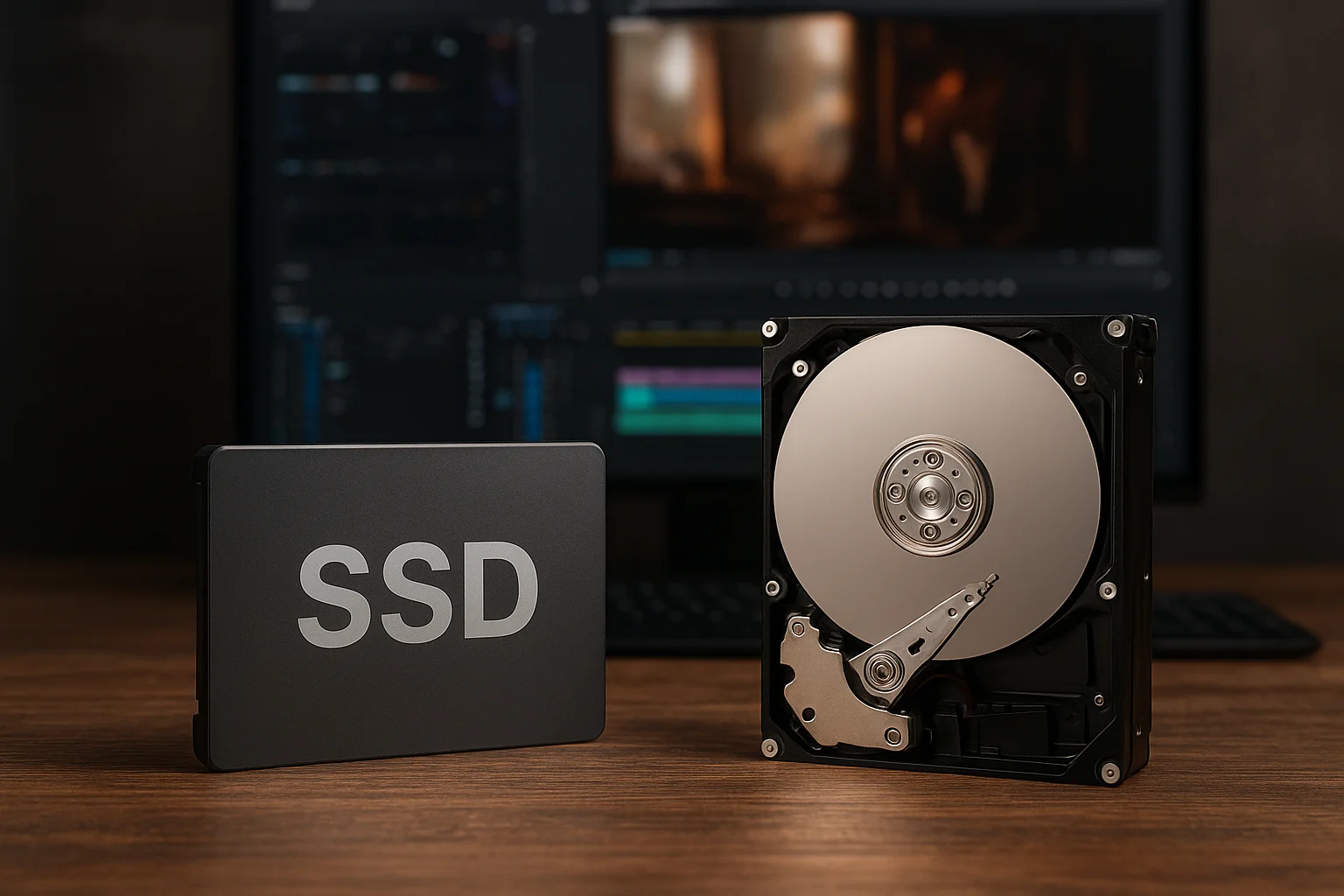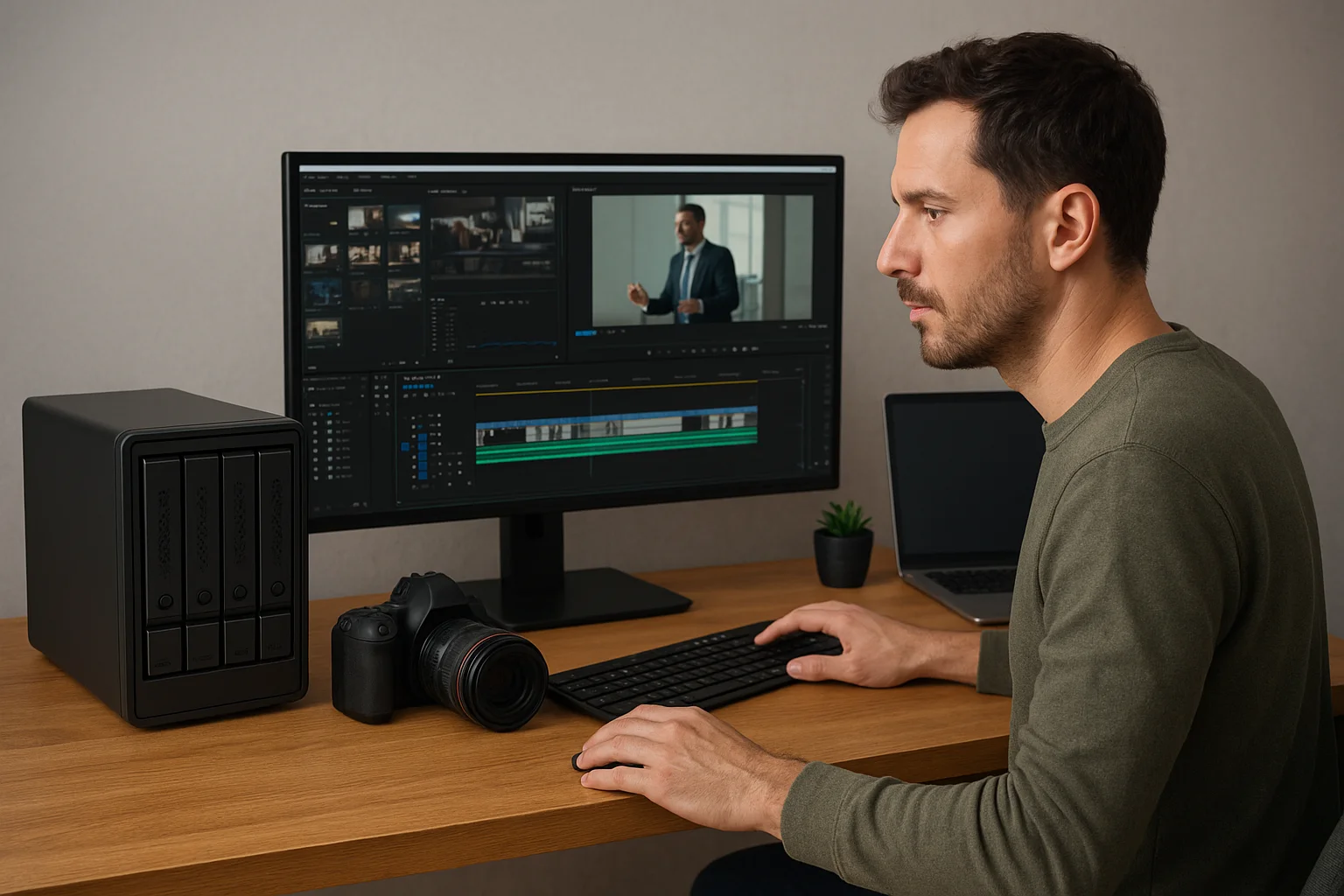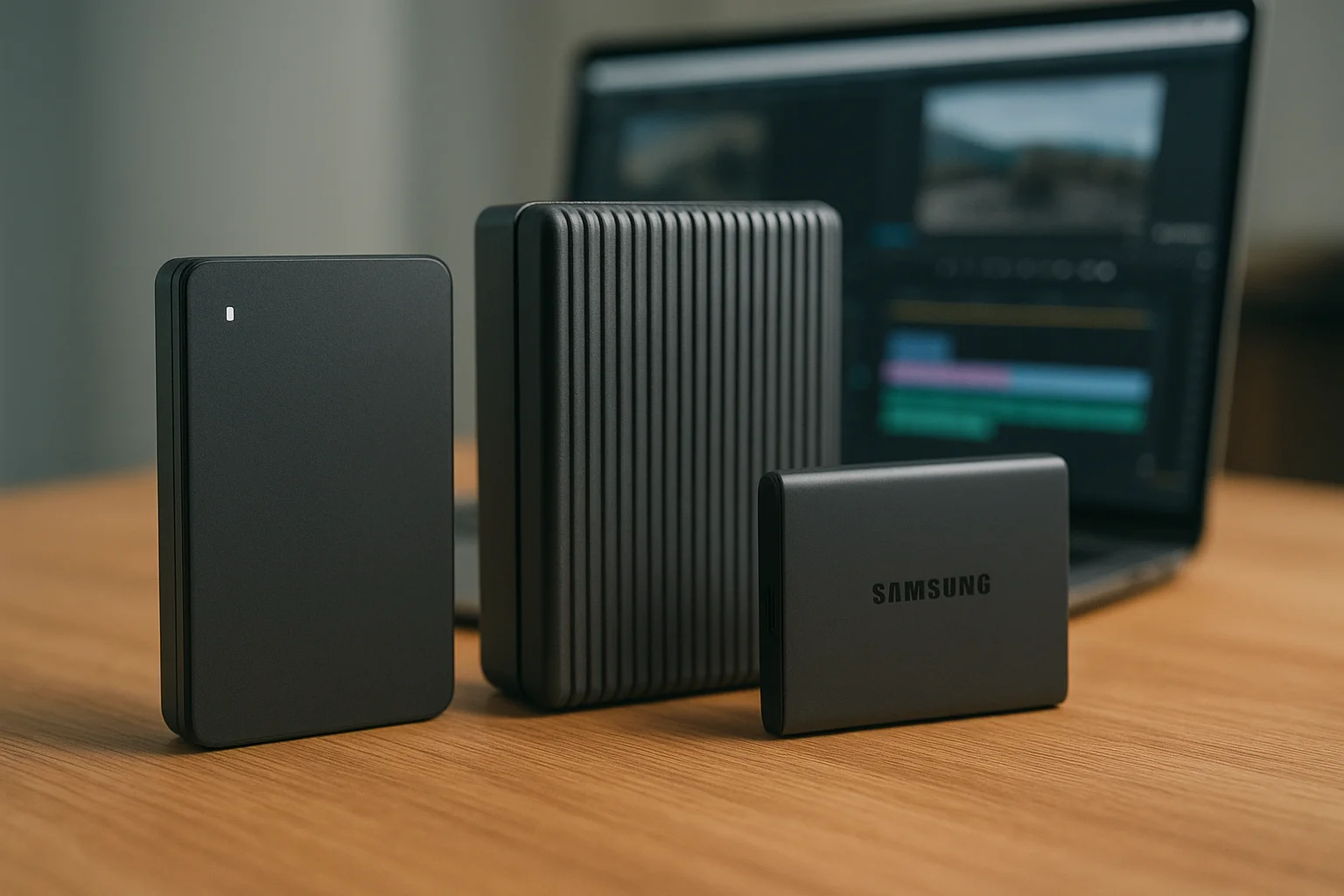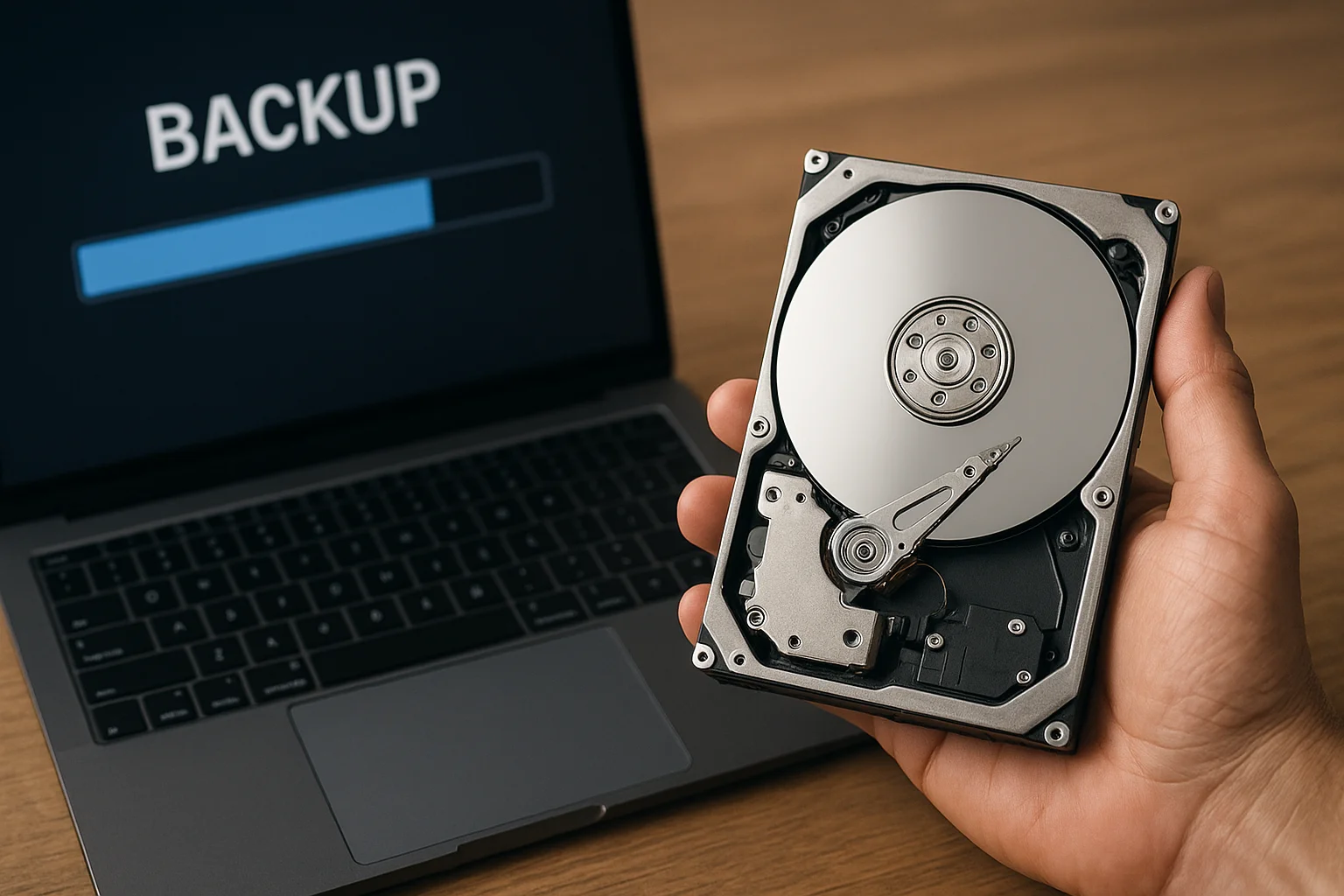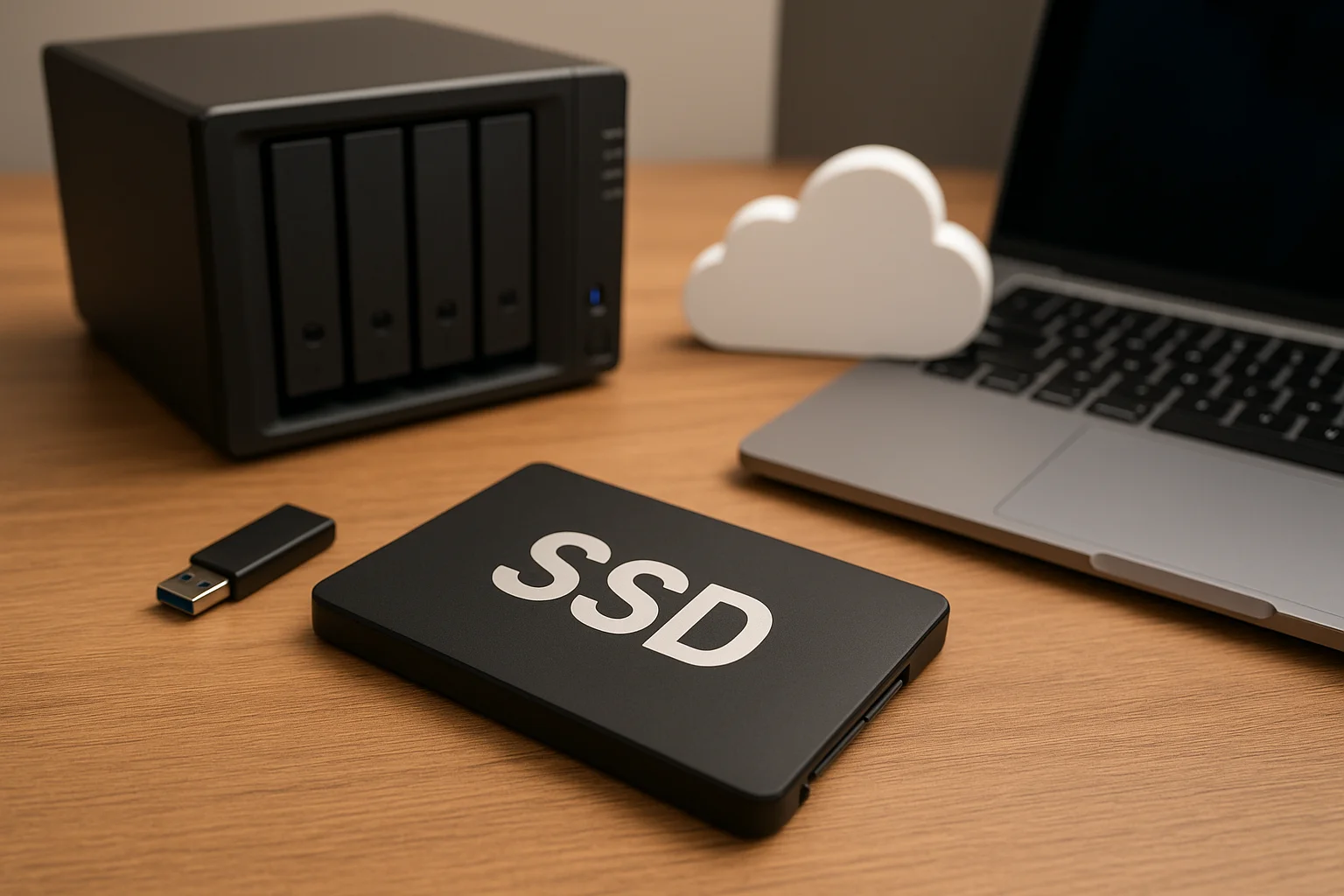Understanding the Difference Between SSDs and HDDs
When choosing storage for video editing, it helps to start with the basic technical differences. A HDD (hard disk drive) stores data on spinning magnetic platters and reads/writes using a mechanical arm. An SSD (solid-state drive) stores data on flash memory chips with no moving parts. These architectural differences produce predictable effects on performance, latency, power use, and physical durability.
In practice this means SSDs offer much lower latency and far faster random-access speeds, which translate into smoother timeline scrubbing, faster project load times, and quicker exports for certain workflows. HDDs typically provide larger capacities at a lower price per gigabyte, which is valuable for storing raw footage archives or long-term projects that do not require fast access.
Below are the most relevant practical differences for an editor to keep in mind:
- Access pattern: SSDs excel at random reads/writes; HDDs perform better on sustained sequential transfers for large contiguous files, though modern SSDs are fast at both.
- Latency: SSDs have near-instant access; HDDs have mechanical seek time that causes delays when accessing many small files.
- Durability: SSDs are less sensitive to shock; HDDs can fail from drops or vibration because of moving parts.
- Cost per TB: HDDs still lead on price per TB, but SSD prices have been falling quickly.
How Drive Speed Impacts Video Editing Performance
Speed is one of the most actionable factors in day-to-day editing. Drive performance affects these common tasks: opening projects, scrubbing the timeline, playing multiple streams, rendering previews, and exporting final files. The most important metrics are sustained read/write throughput (measured in MB/s) and input/output operations per second (IOPS), which govern how well a drive handles many small file operations.
For real-time playback of high-resolution or multi-camera timelines, sustained throughput matters. For timelines that reference many small media files (proxy clips, thumbnails, sound effects), IOPS and low latency are crucial. Here are practical targets depending on your workflow:
- For editing 1080p single-stream footage: a modern HDD can often suffice, but an SSD will make the experience snappier.
- For 4K editing and multi-cam timelines: prefer a fast SSD (NVMe if possible) or a RAID array of HDDs with adequate throughput.
- For RAW or high-bitrate codecs (ProRes RAW, RED, ARRIRAW): use SSDs or very fast RAID HDD setups to avoid dropped frames during playback.
To illustrate typical sustained throughput ranges and what they mean for editing, the table below summarizes rough real-world values. These are practical indicators rather than absolute guarantees.
| Drive Type | Typical Sustained Read/Write | Practical Editing Use |
|---|---|---|
| Consumer HDD | 100 - 250 MB/s | Good for single 1080p streams, mass storage, backups |
| SATA SSD | 400 - 600 MB/s | Responsive timeline, faster exports, 1080p-4K light editing |
| NVMe SSD | 1000 - 7000+ MB/s | Smooth multi-stream 4K/8K editing, heavy RAW workflows |
Storage Capacity and Cost: Which Drive Offers Better Value?
Cost per gigabyte is the metric editors use when weighing where to store large footage libraries. HDDs still dominate at the high-capacity, low-cost end: a multi-terabyte HDD is typically much cheaper than an SSD with the same capacity. That makes HDDs ideal for long-term archives, project backups, and footages that are infrequently accessed.
However, total project cost must include productivity time. Faster drives save editor time—reducing waiting during imports, renders, and exports. For many professionals, the time saved by SSDs justifies the higher upfront cost because it converts directly into faster turnaround and fewer interruptions.
Use this practical approach to allocate budget:
- Buy an SSD for your active project drive where source media, cache, and project files live. This yields immediate workflow benefits.
- Use large-capacity HDDs for raw footage archives and final delivery storage that are accessed rarely.
- Consider a hybrid approach: a moderate NVMe SSD for active work, a SATA SSD for shorter-term scratch, and HDD arrays for archiving.
Tip: if budget is tight, prioritize SSD capacity for the projects you are actively editing and move older projects to HDDs once finalized.
Reliability, Durability, and Data Security Considerations
Reliability is not just a spec sheet item—it's the difference between a minor annoyance and a major data loss. SSDs and HDDs fail in different ways. HDDs often show mechanical failure patterns: clicking noises, slow spin-up, and progressively worsening performance. SSD failures can be sudden and are often related to controller issues or reaching the drive's write endurance limit.
To protect media assets, implement these actionable practices:
- Always maintain at least one backup copy on a separate physical device - follow the 3-2-1 rule where feasible: 3 copies, 2 different media types, 1 offsite.
- Use RAID for redundancy if uptime and immediate recovery are critical; remember RAID is not a backup against accidental deletion or corruption.
- Monitor drive health with SMART tools and swap drives that show degrading metrics.
- Prefer SSDs for mobile editing or field work where shock resistance matters; use HDDs for stationary archive racks.
Finally, encrypt sensitive material if required by contract or law. Encryption practices are independent of drive type, but using full-disk encryption on an SSD adds minimal overhead while protecting footage if a drive is lost or stolen.
Best Use Cases: When to Choose SSD vs. HDD for Video Editing
The choice between SSD and HDD should be guided by the specific demands of your projects, budget constraints, and workflow. Below is a practical breakdown of typical use cases and the recommended storage approach for each.
| Use Case | Recommended Drive | Why |
|---|---|---|
| Daily editing of 1080p projects | SATA SSD or fast HDD | SSD improves responsiveness; HDD can work if budget is tight |
| 4K multi-cam or high-bitrate RAW | NVMe SSD (or SSD RAID) | High sustained throughput and low latency avoid dropped frames |
| Field work and mobile editing | External SSD (NVMe in a rugged enclosure) | Shock resistance and speed for ingest and proxy creation |
| Long-term footage archive | High-capacity HDD (or cold storage tape) | Best price per TB for rarely accessed media |
| Scratch/cache for rendering and previews | SATA or NVMe SSD | Fast temporary storage accelerates rendering and cache builds |
Practical recommendation: combine both technologies. For example, keep an NVMe SSD as your active project and cache drive, a SATA SSD for short-term transfers, and a pair of large HDDs for archived footage. This hybrid model maximizes productivity while controlling costs.
When choosing specific models, pay attention to warranty length, TBW (terabytes written) for SSDs, spindle speed for HDDs, and reviews about sustained performance under continuous load. Real-world testing with your codecs and software is the final arbiter: run a short test project to confirm the drive meets your throughput needs before committing large projects to it.
